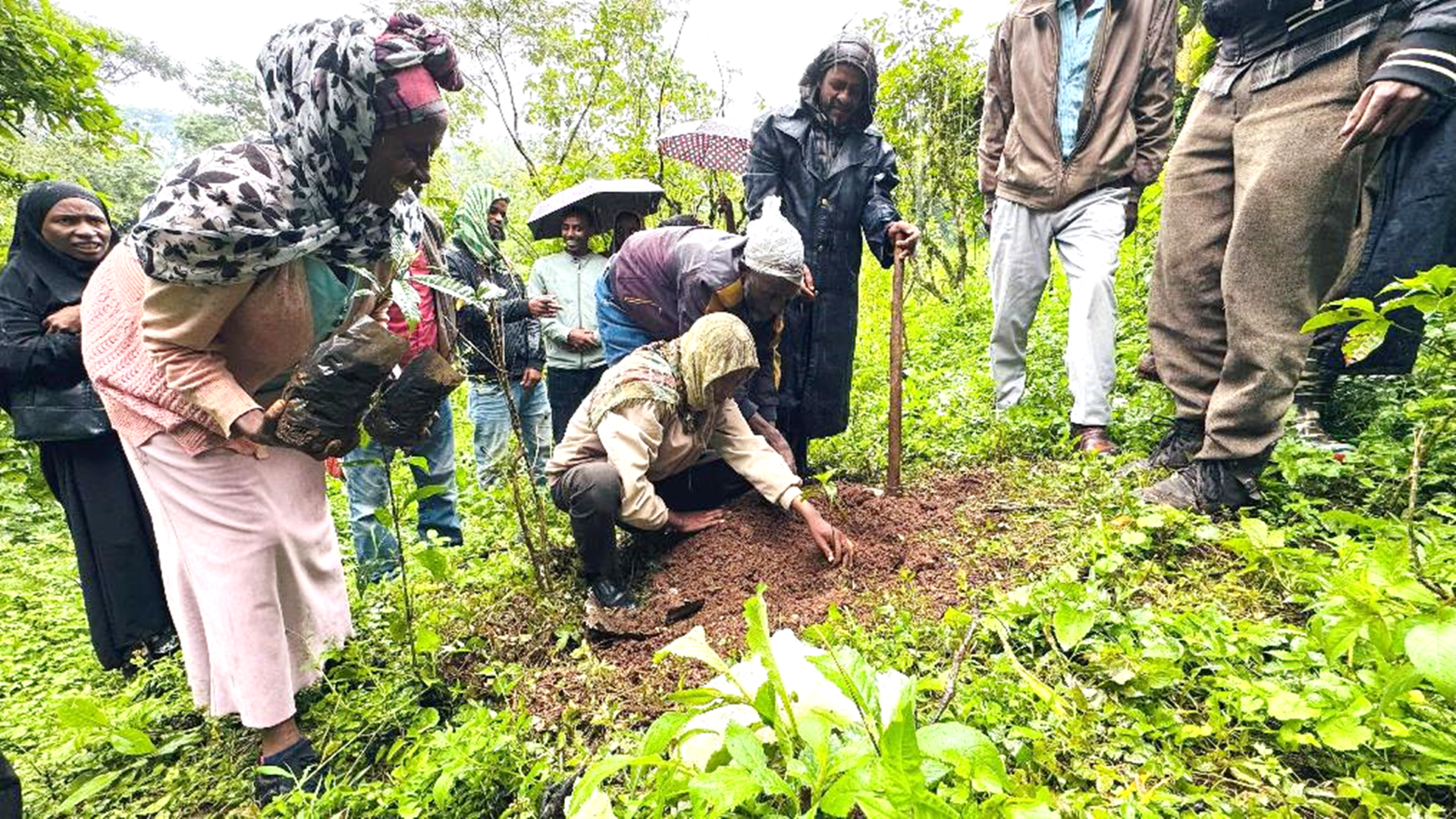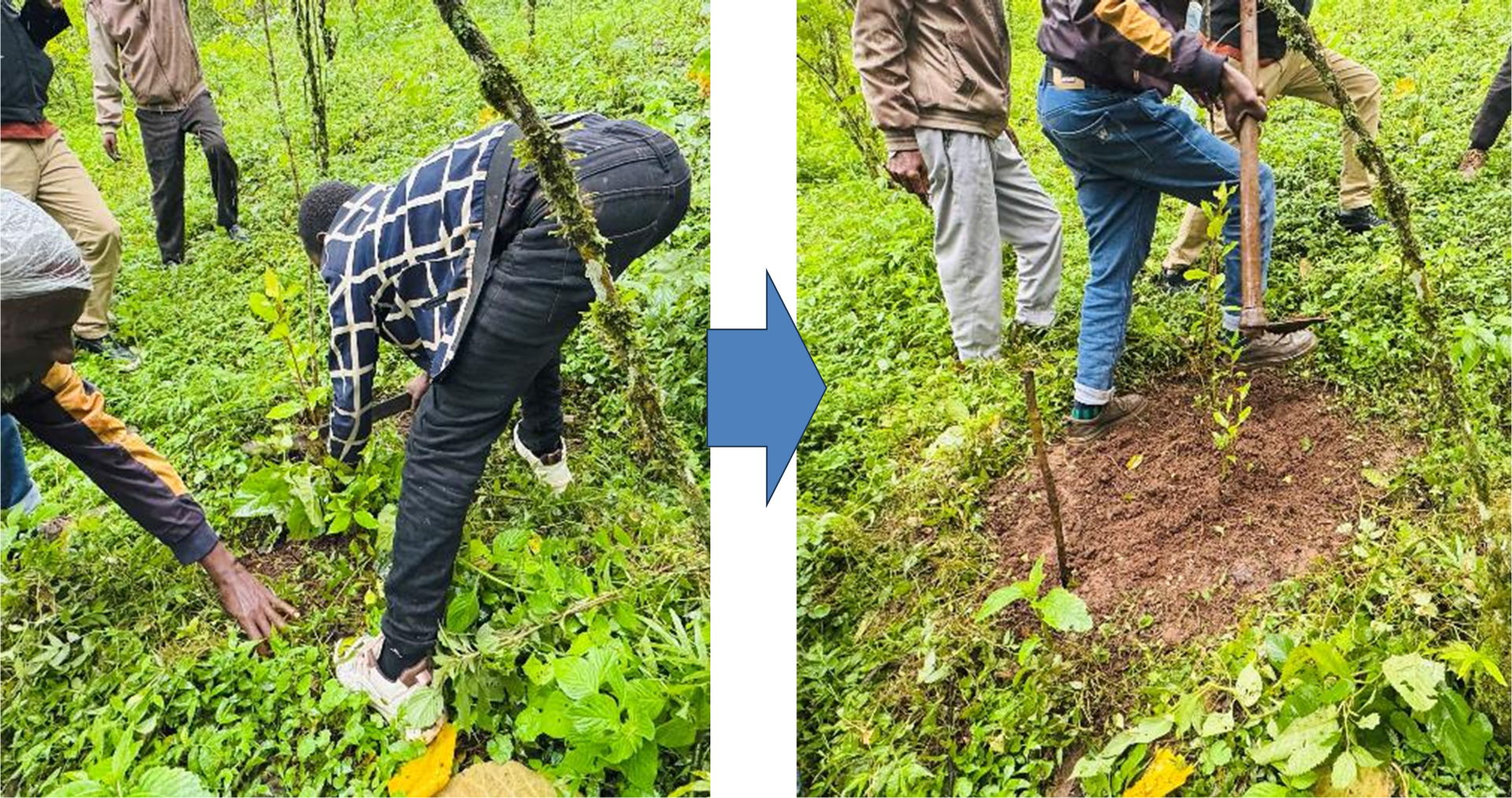Forest Ecosystem Analysis (FESA) sets farmers' forest conservation activities in motion
The Farmer Field School for Forest Management Cooperatives (FMC-FFS), currently being implemented under the Project, is now in its second cycle. The Project supports the implementation of FMC-FFS with farmers taking on the role of facilitators. As the current cycle approached its conclusion, a six-day Training of Facilitators (ToF) was conducted from July 14 to 19, 2025, with 25 participants, including eight farmer facilitators currently undergoing training.
The main content of the training was the evaluation method and concrete steps for graduation and follow-up of the Assisted Natural Regeneration (ANR) activities. The FMC-FFS is a unique program in that it allows farmers to take the initiative in understanding forest structure and dynamics. Through FESA observations, farmers identify issues and formulate their action plans.
The Project promotes ANR as a practical solution to these challenges. Specifically, to restore degraded forests, farmers carry out enrichment plantation using "wildlings" (seedlings of native species they collect from nearby forests) and raise them in nurseries, as well as protect naturally regenerating seedlings. Farmers have already begun to collect a wide variety of seedlings from neighboring forests and raise them in their nurseries. We have confirmed that there are 14 species of seedlings, including wild coffee trees (Coffea arabica). This type of farmer-led wildling propagation is likely the first of its kind in Ethiopia, and it is gaining attention locally as a pioneering initiative.
Furthermore, to plant seedlings of various local tree species in appropriate locations that match the characteristics of each tree species, a "Tree Species-Site Matching Assessment" workshop was introduced in this training program, utilizing the traditional knowledge of farmers. The workshop was introduced and tested for the first time in this training program. This enables farmers (as well as extension workers) to plant seedlings based on the specific ecological requirements of each species, such as light conditions. As a result, higher seedling survival rates can be expected.
JICA will continue to support the promotion of sustainable forest and natural resource management in Ethiopia through participatory learning and capacity-building initiatives involving forest users.
For more information about the Project, please visit:
https://www.jica.go.jp/oda/project/1900309/index.html?wovn=en

"Tree Species - Site Matching Matrix" created by ToF
The matrix was designed with light conditions on the vertical axis (represted by sun, sun and clouds, and black clouds to indicate sun-loving, intermediate, and shade-torlerant species respectively), and moisture conditions on the horizontal axis illustrated by the number of water drops, indicating wet (4 water drops), medium (2 water drops), and dry (1 water drop), respectively. This visual format enables the participants (farmers) to quickly understand which tree species should be planted in which locations. The farmer facilitators are scheduled to work with farmers' groups to develop and apply this matrix in the field.

Planting of seedlings that match the suitability of the tree species, removal of surrounding weeds after planting, and marking for protection purposes.
Farmer groups who participated in the FMC-FFS training have begun raising a variety of wildlings on their own initiative. The photo shows a planting exercise using wildlings of
Aningeria adolfi-friederici
, a native tree species locally known in Afaan Oromoo as
Quararoo
. From now on, the farmer groups plan to conduct enrichment planting by reintroducing the wildlings they have raised into suitable sites in the forest, based on tree species-site matching assessments. This approach aims to promote natural regeneration and support forest restoration.

Practical exercise on weeding around naturally regenerated seedlings in the forest and marking them for protection
Photo Left: Before liberation (weeding and marking)
Photo Right: After liberation
In forest areas where naturally regenerated seedlings are present, these young trees are protected to enhance the forest's natural regenerative capacity and support its recovery. The photo shows
Prunus africana
, a native species locally known in Afaan Oromoo as
Omoo
. Marking these seedlings with wooden sticks increases their visibility and helps prevent accidental removal during weeding operations.
